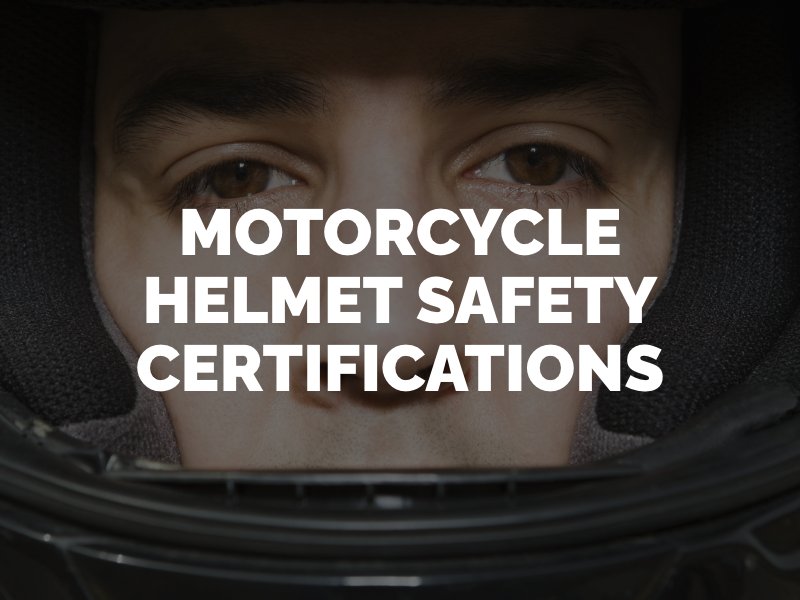The Different Types of Motorcycle Helmet Certifications
In a motorcycle accident, the helmet is the single most important piece of protective gear that can be worn by a rider. According to the Centers for Disease Control and Prevention, helmets reduce the risk of serious head injury by 69 percent and death by 37 percent. When searching for the right helmet, you need to understand the standards used to test and rate motorcycle helmet safety.

What Is Motorcycle Helmet Certification?
Motorcycle helmet certification means that a helmet has passed safety tests set by the certifying body – typically, an establishment that is an authority on safety. Helmet certifications are designed to ensure that helmets distributed to consumers meet the minimum required safety standards for protecting motorcyclists in accidents.
Snell Memorial Foundation
The Snell Memorial Foundation is a leader in motorcycle helmet safety certification in the United States, and is recognized internationally. Snell’s rigorous testing focuses on impact, penetration, rotation and retention. The Snell Foundation’s safety standards are more stringent than the U.S. Department of Transportation (DOT), making it the gold standard in motorcycle helmet certification.
U.S. Department of Transportation (DOT)
In the United States, the Department of Transportation (DOT) is the governing authority behind motorcycle helmet certification. California Vehicle Code § 27803 requires all motorcycle riders and passengers to wear helmets that are DOT-certified. These helmets comply with the parameters of U.S. DOT Federal Motor Vehicle Safety Standard 218. The DOT’s tests analyze a helmet’s ability to absorb energy during impacts and resist penetration damage. They also test the strength of the chin strap and field of vision for the user.
Economic Commission for Europe (ECE)
The Economic Commission for Europe (ECE) introduced its helmet safety standard in 1972. Motorcyclists in Europe are required by law to wear ECE-approved helmets. The ECE standard is used in nearly 50 countries. Critics, however, point out that the latest ECE test no longer tests for penetration, or how easily the helmet shell is penetrated by a sharp object. ECE tests for impact absorption, chin strap retention, shell deformation, visor impact and field of vision, and performance in various environmental conditions. ECE-approved helmets are labeled (on the chin strap) based on the country for which they have been certified: E1 is Germany, E2 is France, E3 is Italy, E4 is the Netherlands, E6 is Belgium and E11 is Great Britain.
Safety Helmet Assessment and Rating Programme (SHARP)
The United Kingdom has the Safety Helmet Assessment and Rating Programme (SHARP) for motorcycle helmet certifications, but this label can be found on helmets sold worldwide. Helmets tested under the SHARP certification program currently use the standards under British Regulation BS: 6658. Most notably, SHARP tests involve a higher impact velocity than ECE requirements, meaning these helmets may provide greater energy absorption.
Fédération Internationale de Motocyclisme (FIM)
The Fédération Internationale de Motocyclisme (FIM) started certifying helmets specifically for professional motorcycle racing in 2016. It later expanded its reach to certify all types of motorcycle helmets for general use. The current FIM standard, FRHPhe-01, tests for high-speed impacts and the helmet’s ability to withstand rotational forces. It also tests extended impact zones, such as the lower edge of a helmet. If you get injured in a motorcycle accident despite wearing a safety-certified helmet, contact the Los Angeles motorcycle accident attorneys at Rose, Klein & Marias, LLP for a free case evaluation.
